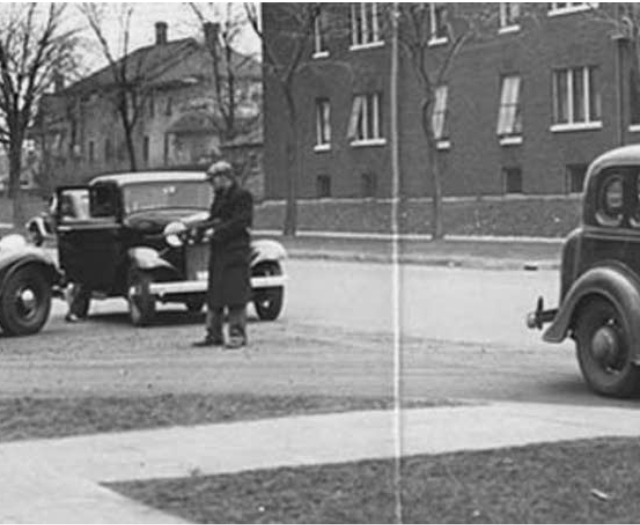The December 1933 ratification of the 21st Amendment dried up the illegal alcohol trade, ending an income source for the criminal underworld that needed to be replaced. Hoping to make large amounts of money quickly without the risks associated with robbing banks, the Barker-Karpis Gang turned to high-profile kidnapping. They'd been successful months prior with the abduction of William Hamm Jr. and saw Bremer as the perfect target for another lucrative score.
Despite the allure of a hefty ransom, the gang wasn't without its internal debate. Alvin Karpis, one of the gang's leaders, told Harry Sawyer, the man who organized the kidnapping, that he would rather rob a bank than take Bremer. Karpis feared the potential public outcry over a high-profile abduction. Ultimately, the chance for a big payday was too great to pass up.
On a frigid January 17th, 1934, morning at around 8:25 am, Edward Bremer, after dropping his daughter Betty off at Summit School at 1150 Goodrich Avenue, went to work. He was ambushed and abducted only blocks away on the corner of Lexington and Goodrich. Later identified as the Barker-Karpis Gang, his kidnappers had followed him briefly to learn his morning routine.
With Bremer now captive, the gang called his trusted business associate and former chauffeur Walter Magee to demand a ransom. It echoed their past success with William Hamm Jr.'s kidnapping: $200,000 for Bremer's safe return. Specific instructions mirrored the Hamm case - no new or sequential bills, placed in two large enough suitboxes. The message was clear: cooperate or face the consequences. The note closed by reassuring that if the family did their part to see Bremer's return, the gang would release him.
The kidnappers instructed the family to place a coded message, "We Are Ready, Alice," in the Minneapolis Tribune's personals section when they were ready to make the ransom payment. Disagreements arose between the FBI and local police. While the feds, eager to apprehend the entire gang, wanted the ransom drop to be a sting operation, local law enforcement planned to kill the kidnappers.
Coming mere months after William Hamm Jr.'s, the abduction sent shock waves countrywide. President Roosevelt (a friend of Bremer's father), politicians, and the national media all looked to J. Edgar Hoover and the FBI for answers. Minnesota's Governor Olson offered full support from state law enforcement, while within the gang, tensions flared; Fred Barker suggested killing Bremer in retaliation but was overruled.
Despite the FBI's objections and a failed attempt to reduce the ransom, the family paid the hefty sum after twenty-two uncomfortable days. Adolph Bremer penned a plea to his son's captors. The note, delivered with the ransom, offered a desperate bargain: "This money is not marked... I am counting on your honor... Be sports and do the square thing by turning Edward loose at once."
At around 8 PM on February 7th, 1934, Bremer was released between Rochester and Chatfield along Highway 52. The gang told him to take a bus back to St. Paul. With limited information due to his blindfolded confinement, he could only tell the FBI he was held by three men in a sedan. Fearful for his daughter's safety due to the kidnappers' threats, Bremer remained tight-lipped about his captors.
With Bremer now home safe, public outrage fueled an intense focus on dismantling organized crime. Things did not end well for the gangsters.
Despite previous warnings, Bremer became a crucial asset to the FBI. He tried to remember every detail he could, including the wallpaper used in the house he was held in, aiding investigators in linking the gang to the crime. Rumors swirled that the FBI, possibly possessing evidence of the Bremer family's own wrongdoings, pressured him into cooperation by threatening to expose it.
Bremer's high-profile abduction, coming on the heels of the Hamm Jr. case, galvanized the nation and empowered the FBI. This would be the last major crime of the Barker-Karpis Gang. Within two years, the FBI's relentless pursuit effectively ended the era of the gangster.
 Minnesota Then
Minnesota Then
